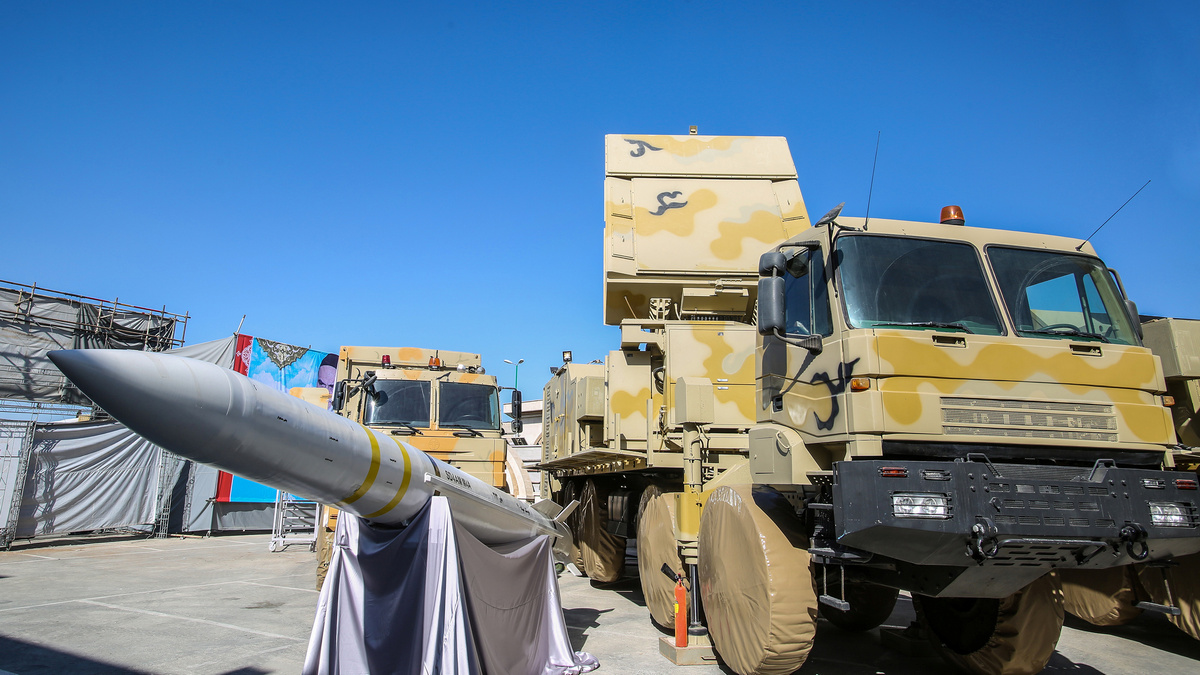Iran has unveiled a new weapons system –which it claims could take out US stealth jets.
The Bavar-373 is being compared to Russia’s S-300 and the US’ own Patriot defence systems.
The development comes amid weeks of tensions — including alleged Israeli strike that killed two Iranian generals, an unprecedented Iranian missile barrage on Israel and the apparent Israeli strike early last week in the heart of Iran — in the backdrop of the Gaza war.
But what is the long-range surface-to-air missile system? How does it work?
Let’s take a closer look:
ArmyRecognition.com reported that the weapons system was designed and manufactured in Belarus.
According to News18, the Bavar-373 first went into service in Iran’s armed forces in 2019.
Officials say it is the first domestically-produced long-range missile defence system.
Tehran began working on the Bavar-373 in 2010.
This came after it was unable to buy Russia’s S-300 missile system due to international sanctions.
The Bavar-373 uses the Sayyad-4B surface-to-air missiles.
Newsweek reported that Iran put the latest version of Bavar-373 on display during a 17 April military parade.
It quoted Iran’s military website as saying the Bavar-373 “impressive” range exceeded 299 kilometres.
Impact Shorts
More ShortsIt said the Bavar-373 could reach an altitude of 120 kilometres.
Perhaps the boldest claim Tehran officials have made is that the system can detect fifth-generation fighter aircraft like Lockheed Martin’s F-35 Lightning jets.
These state-of-the-art planes are furnished with stealth technology aimed at evading radar detection.
The Bavar-373 can also find and destroy helicopters, drones, as well as anti-radiation, ballistic, and cruise missiles, according to IranIntl.com.
Like the S-300, the Bavar-373 comprises a command vehicle, search radar, engagement radar, and up to six launchers.
Al Jazeera quoted some state media as saying that the Bavar-373’s capabilities are thought to be on par with the S-400 batteries – the world’s top defence systems.
While Iran has limited the Bavar-373 to just military exercises, experts think it is part of one of the densest air defence networks in the world.
‘Real-world testing required’
Newsweek quoted Special Operations Forces Report (SOFREP) as calling the upgraded system “a significant development for Iran’s defence industry, showcasing both its growing self-sufficiency and its aspirations for a more advanced air defence network."
“Additionally, Iranian sources report that the upgraded Bavar-373 boasts enhanced target detection and tracking abilities, allowing it to identify up to 100 aerial targets simultaneously and engage multiple threats with its Sayyad-4B missile armament,” SOFREP wrote.
Newsweek quoted SOFREP as pointing out that Tehran’s claims have not been independently checked.
It added that “real-world testing” is required before one can get a handle on Bavar-373’s capabilities.
“Despite the need for cautious interpretation, the unveiling of the upgraded Bavar-373 underscores a critical point: Iran’s defence sector is demonstrably maturing,” SOFREP added.
SOFREP noted Iran’s history of strategic partnership with Russia and China.
“Though potentially tempered by international sanctions, these collaborations have provided Iran with valuable technology transfer and expertise in areas like missile technology and air defence systems.”
SOFREP said the upgraded Bavar-373 was perhaps put on display to send “a potent message of deterrence aimed at potential adversaries, particularly in the context of the Middle East’s complex geopolitical landscape.”
Israel has long considered Iran to be its greatest enemy — citing the Islamic Republic’s calls for Israel’s destruction, its controversial nuclear program and its support for hostile proxies across the Middle East.
These tensions have risen since Hamas and Islamic Jihad, Iranian-backed Palestinian groups, attacked Israel on 7 October, sparking a devastating Israeli offensive in Gaza that has continued for more than six months. Hezbollah, an Iranian-backed proxy in Lebanon, immediately began striking Israeli targets, opening up tit-for-tat fighting along a second front, while Iranian-backed militias in Iraq, Syria and Yemen have also fired missiles and drones at Israel throughout the war.
“It appears we’re closer than ever to a broad regional war, despite the fact that the international community will most likely make a great effort to de-escalate tensions,” wrote Amos Harel, the military-affairs commentator for the Israeli daily Haaretz.
If this latest round subsides, Israel can now return its focus to its ongoing war in Gaza and the simmering fighting with Hezbollah. With neither of those fronts letting up, the risk of further run-ins with Iran remains high, though neither side appears eager after Friday’s apparent Israeli attack.
“Neither side is ready to jump over the brink,” said Alex Vatanka, director of the Iran program at the Middle East Institute. But he added a major caveat.
“Probably we’re going to go back to the proxy war,” he said, but now it’s a proxy war with the risk of “that sudden eruption of state-to-state war. Which we didn’t have to worry about before.”
With inputs from agencies


)

)
)
)
)
)
)
)
)



